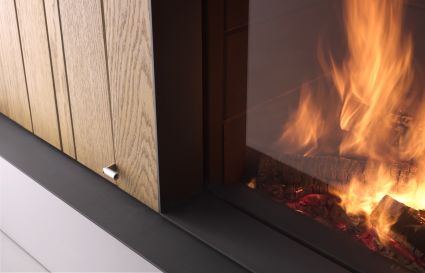
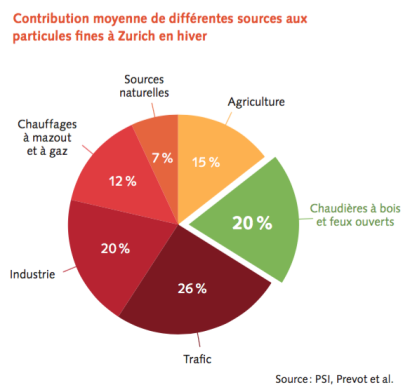
Certain residues from the combustion of wood can be found in the atmosphere, in the form of fine particles. These particles, which we breathe in, are harmful, especially for those with respiratory problems.
The pie chart opposite shows the sources of the fine particles suspended in the air in Zurich one day in winter. 20% of the particulate comes from wood-fired heating. But is that reason enough to condemn it?
Like many other technologies, the design and engineering of wood-burning stoves has changed a lot in recent years. These changes mean the introduction of products that perform much better than their predecessors. This phenomenon is particularly marked when it comes to particles, as – in laboratory conditions – a modern burner produces somewhere in the region of between a hundred times and a thousand times fewer particles than an older model or an open fire.
As well as this, scientific studies show that the quality of the combustion changes – in a good way! – the composition of the smoke: The toxicity of the same quantity of fine particles emitted by an efficient appliance will be much lower than that of an older stove.
With this knowledge, but taking into account the fact that even a good burner is rarely used in optimum conditions, it seems reasonable and fairly conservative to assume that a modern burner, used in classic conditions, will produce at least ten times fewer particles than an older stove, and twenty times fewer than an open fire!
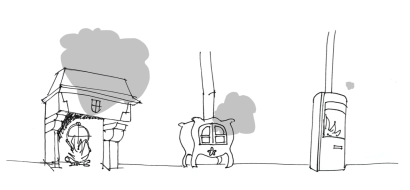
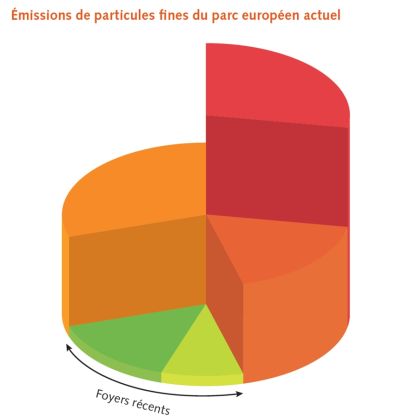
A recent study estimated that European wood-burning appliances include around 16 million open fires, the same number of enclosed built-in fires and just under 26 millions stoves.
If you consider the fact that among the built-in burners and stoves, a third of all wood-burning appliances are modern and efficient appliances, and taking into account the emission factors suggested in the paragraph above, we can estimate the contribution of different types of appliances to the emissions caused by wood-burning stoves.
To do this, it is assumed that enclosed fires are used on average twice as often as open fires.
The second figure opposite shows the domination of open fires and old burners in the emissions caused by wood-burning appliances.
Based on this, it is easy to calculate that if all open fires and old enclosed fires were replaced with efficient appliances, particle emissions would be reduced by nearly 90%, as shown in the last figure!
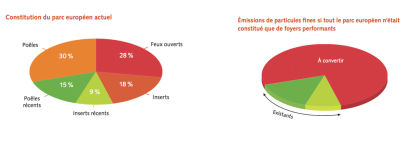
In the current climate of austerity, climate change and energy insecurity, isn’t it time to return wood-burners to their rightful place and help the industry progress?
The brief analysis outlined in this document shows that the potential for progress when it comes to particle emissions is enormous, as long as proactive measures are taken to encourage consumers to use efficient systems properly (which will also give more households the benefits of the joys of using wood to produce heat!).